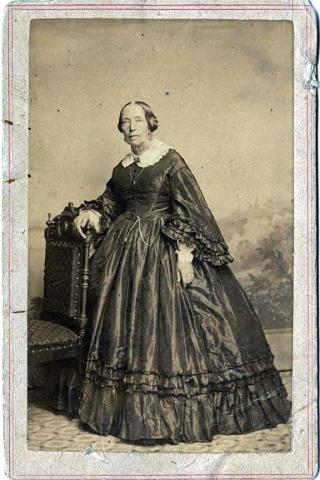Mexican women had always played an important role in the nation’s military life. Women often traveled with the army, acting as cooks, nurses, and performing other services. Since the Mexican army relied heavily on forced conscription, to limit the rate of desertion, soldiers were allowed to bring their families with them on extended campaigns. During Santa Anna’s march into Texas in 1836, for example, hundreds of women and children accompanied the army. At the same time, however, women frequently performed the same services for U.S. troops, evidence that nationalistic sentiment in Mexico was not yet highly developed.
Mexican intellectuals, on the other hand, exhibited a fierce nationalism, which they often expressed with gendered language that described the war as a rape of their homeland. To inspire patriotism and the need for greater self-sacrifice, Mexican writers called attention to reports that "ferocious Yankee volunteers have violated chaste young ladies [and] thrown themselves upon our women…" As the war continued to go badly for Mexico, several texts appeared which purported to be written by women, clearly intended to shame Mexico’s adult males for failing to protect them (see, for example, the broadside When the Women Oppose the Cowardly Men).
For most American women, news of the outbreak of war with Mexico was greeted with a burst of patriotic enthusiasm. Although female members of abolitionist societies opposed the war, in several states women formed committees that organized banquets, dances, and parades for newly created volunteer regiments. Many sewed flags and banners, quilts, and blankets for the men of their community who had enlisted and would soon be departing for Mexico.
A few women played more active roles. Jane McManus Storms Cazneau, a journalist for the New York Sun and the Democratic Review, became a strong proponent of Manifest Destiny, and witnessed Winfield Scott's capture of Vera Cruz in March 1847, becoming the first female war correspondent in U.S. history. Ann Chase, the Irish-born wife of the U.S. consul in Tampico, passed along critical secrets and information about Mexican troop movements. Perhaps the most famous American woman to emerge during the war was Sarah Borginnis, who had accompanied her husband to Mexico as a laundress with the Missouri Seventh Infantry. When the war began she was working as a cook at Fort Texas, later renamed Fort Brown. During the bombardment of the fort, her courage came to the attention of the press, who nicknamed her the "Heroine of Fort Brown." Also known as "the Great Western," she traveled with Taylor’s army as a nurse and cook, and participated in the Battle of Buena Vista.


